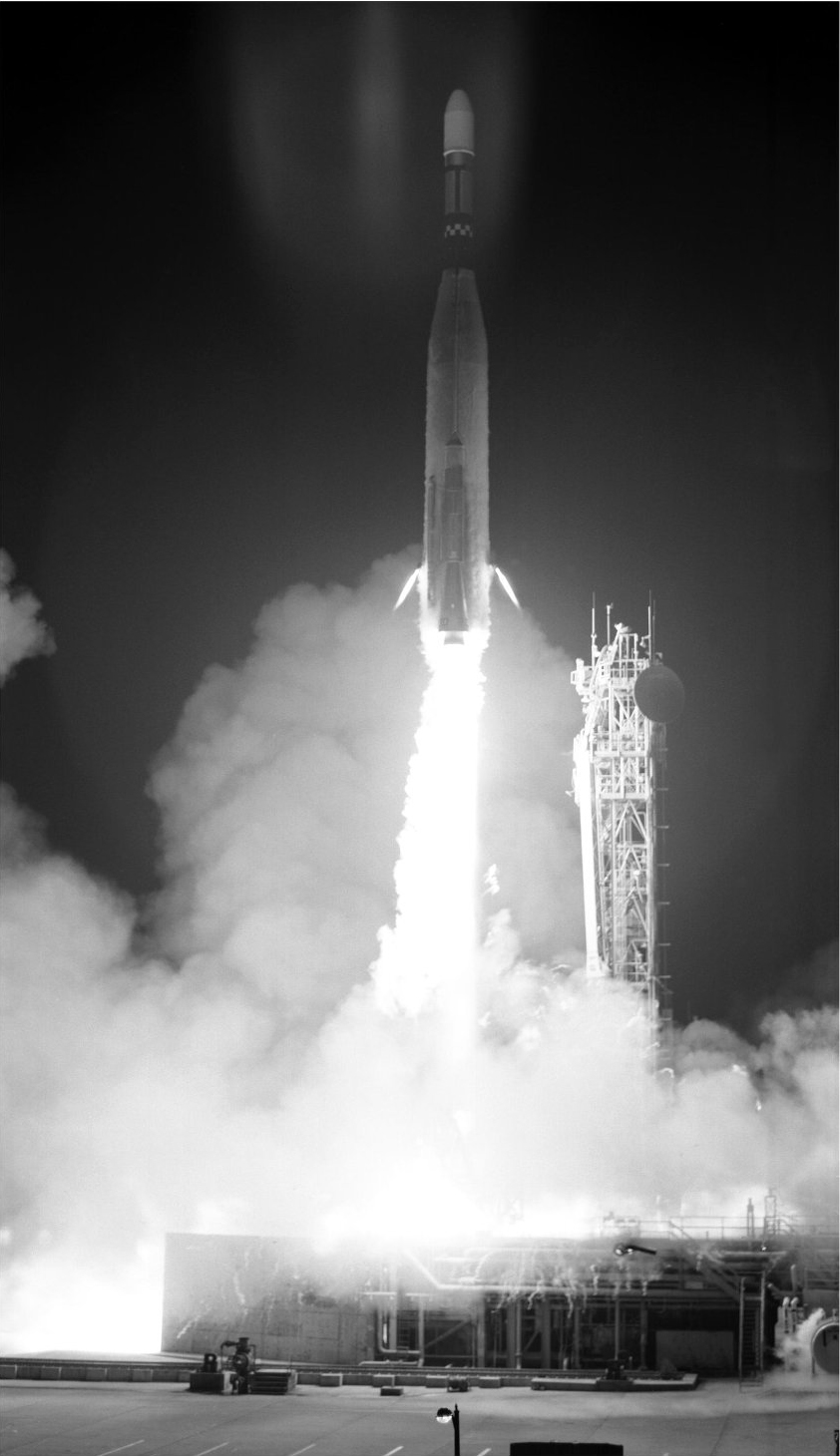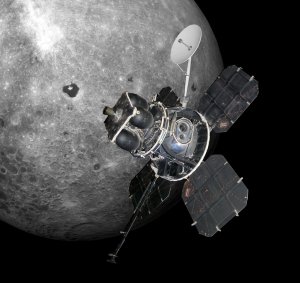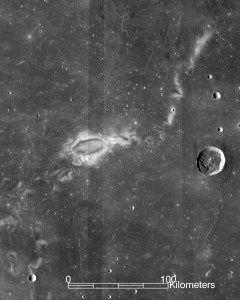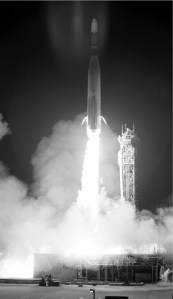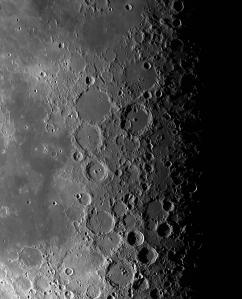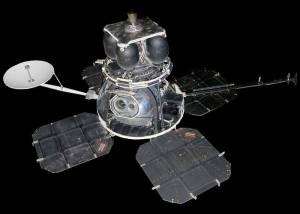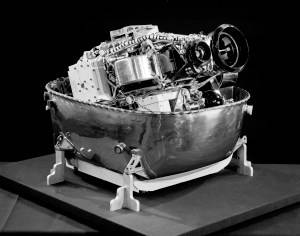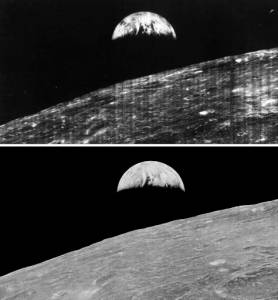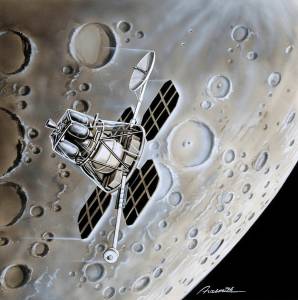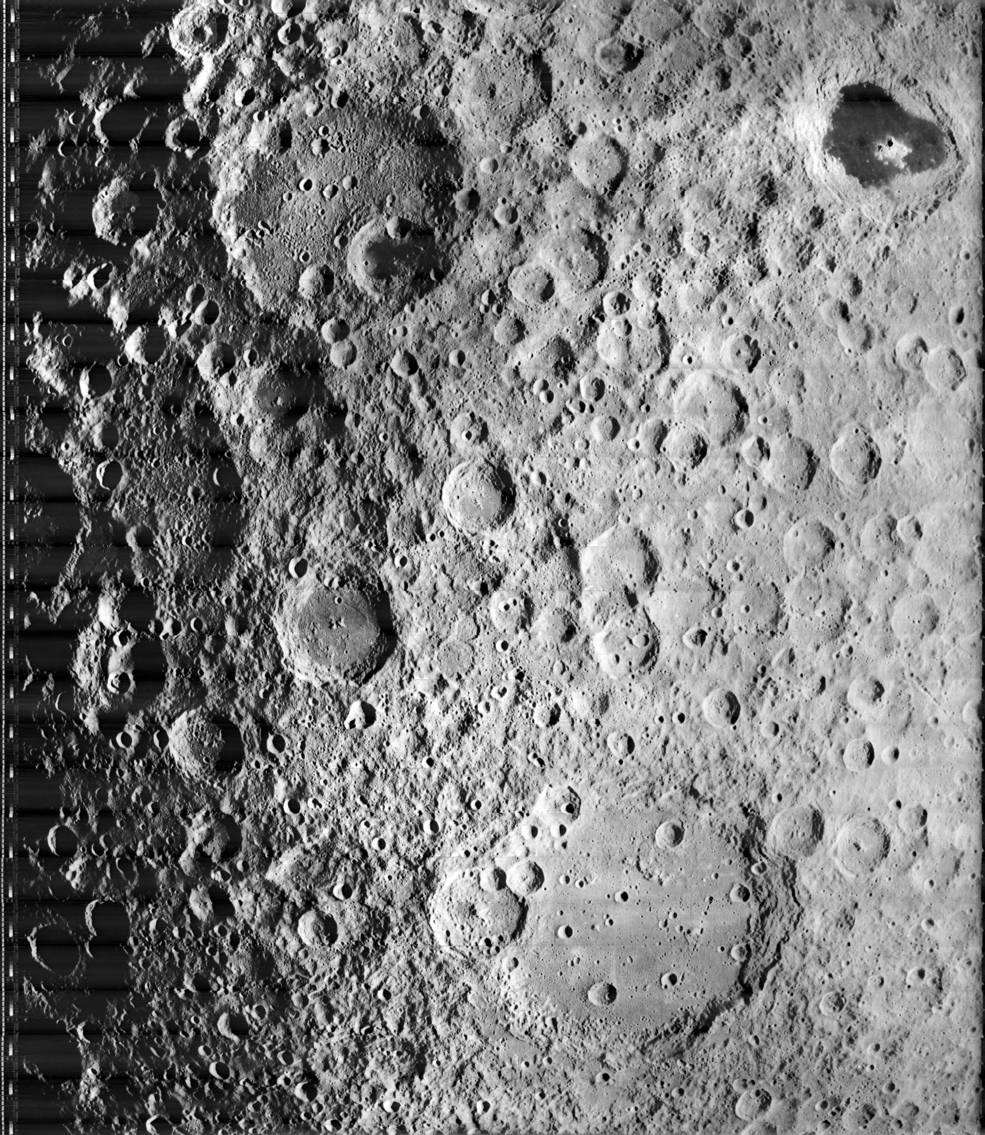
Lunar Orbiters
The Lunar Orbiter spacecraft were designed primarily to photograph areas of the lunar surface for selection and verification of safe landing sites for the Surveyor and Apollo missions. It was also equipped to collect selenodetic, radiation intensity, and micrometeoroid impact data.
missions
Satellites
Moon Photographed
Lunar Orbiter (1966 – 1967)
Five Lunar Orbiter missions were launched in 1966 through 1967 with the purpose of mapping the lunar surface before the Apollo landings. All five missions were successful, and 99% of the Moon was photographed with a resolution of 60 m or better. The first three missions were dedicated to imaging 20 potential lunar landing sites, selected based on Earth-based observations. These were flown at low inclination orbits. The fourth and fifth missions were devoted to broader scientific objectives and were flown in high altitude polar orbits. Lunar Orbiter 4 photographed the entire nearside and 95% of the farside, and Lunar Orbiter 5 completed the farside coverage and acquired medium (20 m) and high (2 m) resolution images of 36 pre-selected areas. The images at the top of the page show the Lunar Orbiter spacecraft with the high and medium resolution cameras at the center, and an image of the crater Tycho taken with the Lunar Orbiter 5 medium resolution camera.
The Lunar Orbiters had an ingenious imaging system, which consisted of a dual-lens camera, a film processing unit, a readout scanner, and a film handling apparatus. Both lenses, a 610-mm narrow angle high-resolution (HR) lens and an 80-mm wide-angle medium resolution (MR) lens, placed their frame exposures on a single roll of 70 mm film. The axes of the two cameras were coincident so the area imaged in the HR frames were centered within the MR frame areas. The film was moved during exposure to compensate for the spacecraft velocity, which was estimated by an electric-optical sensor. The film was then processed, scanned, and the images transmitted back to Earth.

Lunar Orbiter 1
Firsts Key Dates Aug. 10, 1966: Launch Aug. 14, 1966: Entered lunar orbit Oct. 29, 1966: Spacecraft crashed on Moon In Depth: Lunar Orbiter 1 The Lunar Orbiter program originated in response to…
Learn More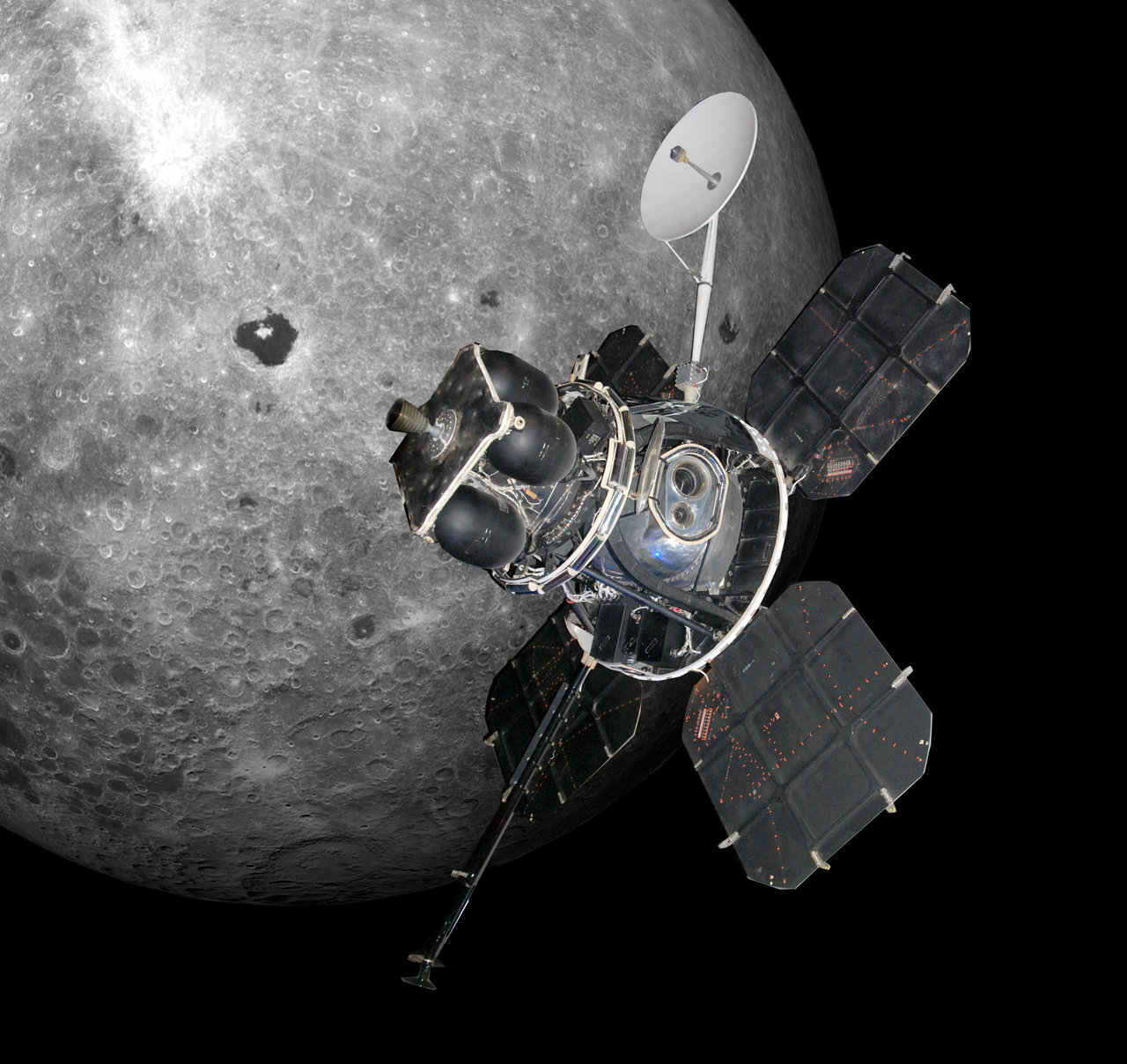
Lunar Orbiter 2
Key Dates Nov. 6, 1966: Launch Nov. 10, 1966: Spacecraft arrived in lunar orbit Nov. 18, 1966: Photography mission began Oct. 11, 1967: Spacecraft deliberately crashed on the Moon In Depth: Lunar Orbiter 2…
Learn More
Lunar Orbiter 3
Key Dates Feb.5, 1967: Launch Feb. 8, 1967: Arrived in lunar orbit Feb. 15, 1967: Photographic mission began Oct. 9, 1967: Spacecraft intentionally crashed onto lunar surface In Depth: Lunar Orbiter 3 Lunar Orbiter…
Learn More
Lunar Orbiter 4
Key Dates May 4, 1967: Launch May 8, 1967: Entered lunar orbit May 11, 1967: Began photographic mission Oct. 6, 1967: Spacecraft crashed onto the Moon Firsts In Depth: Lunar Orbiter 4 Lunar Orbiter…
Learn More
Lunar Orbiter 5
Key Dates Aug. 1, 1967: Launch Aug. 3, 1967: Lunar Orbiter 5 entered lunar polar orbit Aug. 7, 1967: Photography mission began Jan. 31, 1968: Spacecraft commanded to impact on surface of the Moon…
Learn More
Lunar Orbiter
Lewis Launched Lunar Orbiter 3 to the Moon in the 1960s
Before Apollo missions landed on the Moon, NASA launched a series of orbiters to photographically explore the lunar surface to…
Read the Story